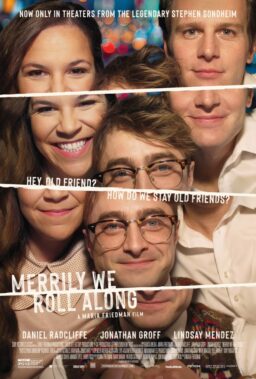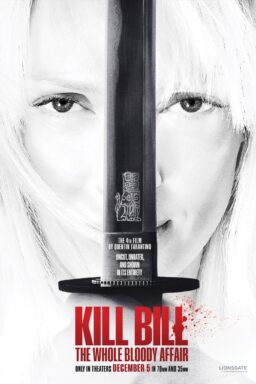How we handle intense situations wherein life and death are on the line is an unexpected theme of this year’s TIFF in three excellent docs about pressure cookers that led to loss of life. Two are obvious partners, stories of a half-century ago that also say something about conflict resolution of the modern era. The third is the kind of doc that could break out and become a legitimate hit if a studio could get it to a wide enough audience, one of those non-fiction films that’s more intense, satisfying, and moving than most thrillers. All three are on the top tier of my TIFF 2021 so far, movies that should make waves well beyond Toronto.
Let’s start with the story of survival, E. Chai Vasarhelyi & Jimmy Chin’s “The Rescue,” the riveting true story of the rescue of 12 soccer players and their coach from a cave in Thailand. The Oscar-winning directors of “Free Solo” return with another story of people who aren’t quite like you, although these brave men end up using their unique hobby (cave diving) to do the unthinkable, overcome insane conditions to save a dozen children who must have been convinced they were going to die. Expertly assembled, “The Rescue” gains a lot of its emotional power through the open, energetic, even funny interviews assembled by Vasarhelyi and Chin, two people who know how to get their interview subjects to reveal instead of just recount. It becomes a story of collaboration, how people came from around the world to answer the call, and it is incredibly moving and thrilling to watch unfold.
We all know the basics of the story. In 2018, a dozen soccer players and their coach went to play in a cave, described as “their playground” in the early going of “The Rescue,” when monsoon season started early—the cave would have been closed in just a few weeks. Sheets of rain trapped them deep in the cave, sending them over two miles into a labyrinthine system that would continue to flood with water. Through graphics and animation, Vasarheli & Chin deftly convey the insanity of their predicament, trapped literally hours from civilization, almost certain to die.
That’s when two British divers got a call. Rick Stanton and John Volanthen are two of the most accomplished cave divers in the world, and the Thai Navy Seals figured out quickly that they did not have the skill set to pull off this rescue mission. Very few people do. And so the elite cave divers, including other colleagues of Stanton and Volanthen, came to Thailand, joined by forces from around the world, including Chinese and American. Literally, thousands of people worked together to do something that had never been done before.
“The Rescue” is more than a mere news doc. It unfolds with stunning precision, letting the people who were there tell the story, and never softening their unique personalities. We come to know these charming cave divers, and so they become even more like heroes, turned three-dimensional instead of just names in a news article. It is about how much can be accomplished when smart, brave people refuse to give up. That’s a story that we all need right now.

A very different kind of story that we also definitely need right now unfolds in a pair of documentaries about conflict resolution in the 1970s that really should be required viewing for any police officer, prison official, or those in power over either. The great Stanley Nelson (“The Black Panthers: Vanguard of the Revolution”) drops us into the stand-off at “Attica” without much build-up, essentially opening his film on day one of what would become the most impactful standoff between prisoners and police in history. Over two hours, he details what happened in upstate New York in a way that’s never been done before, shaping this story as one of failed decision-making and institutional racism. You may think you know everything about Attica. You don’t.
On September 9, 1971, the prisoners of the Attica Correctional Facility had had enough. As Nelson’s film makes clear, conditions at the prison were deplorable. They weren’t rioting for freedom or power—they were rioting for food and plumbing. They took the staff hostage and a five-day standoff ensued that was watched around the world. After increased attention and failed negotiations, the New York State Police raided Attica, and started shooting. When it was all over, over 40 people were dead, prisoners and hostages, and the event would become the bloodiest one-day conflict on American soil since the Civil War.
Nelson’s film pulls back the curtain on what happened at Attica in a fresh, infuriating way. The truth is that too many people in power (including Nixon, caught on tape complaining about the Blacks at Attica) saw the prisoners as inhuman. They weren’t deserving of better conditions and the minute they took action to get them, they were open to being destroyed. Nelson never draws the line, but it’s not hard at all to see why he made this film in 2021, in the shadow of the Black Lives Matter protests and riots that led people to consider what’s acceptable when people are tired of talking and need to take action.
Nelson’s smartest asset is his well-rounded willingness to point fingers everywhere. He speaks to the surviving family members of people who died at Attica on both sides, prisoners and guards—both caught up in a broken system. He details mistakes and power struggles made during negotiations, and the composite picture is the best ever made about Attica, an event that seems to have faded in history when it might tell us more about where we are today than most others.

An even lesser-known standoff centers the excellent “Hold Your Fire,” which is even more explicitly about conflict resolution and how important it is, then and now. If the authorities trying to talk down scared young men from the ledge of violence don’t see them as human, how could they value their lives enough to try and save them? Director Stefan Forbes (working with the excellent Sam Pollard as Consulting Producer) started with NYPD psychologist Harvey Schlossberg, a pioneer in conflict negotiation who was empowered in the precinct by what happened at Attica but still considered largely inconsequential by a police force that thought bullets solved more than words. Every police officer on Earth should listen to Schlossberg. The lessons he was preaching in the ‘70s are more important than ever.
In 1973, Shu’aib Raheem was a scared 23-year-old, seeing violence in his community that he couldn’t control. To protect himself and those he cared about, he tried to rob a sporting goods store in Brooklyn, and everything went very wrong. Before they could really know what was happening, Raheem and his three Black Muslim collaborators had hostages in the store and waves of officers outside. When the officers tried to end the crisis with force, life was lost.
Forbes smartly allows the people who were there that day, including hostages, the surviving men, and the officers, to tell their stories, and they’re often very different takes on the events of that day. Disputes over who shot first, what was said, etc. indicate the chaos that unfolded, as does some undeniable bias brought to the situation by some of the officers—the one who claims there are no racist cops mere minutes before saying some pretty racist shit that will infuriate people. And yet some of the officers and officials involved here know the truth, especially the one who points out that as emotions rise, rationality falls. We’ve seen this play out over and over again, often with mortal consequences. “Hold Your Fire” is a fascinating case study in how deadly it can be when officers simply refuse to see the big picture. When a criminal isn’t human and a bullet is the solution instead of a conversation, true justice will always be out of reach.












